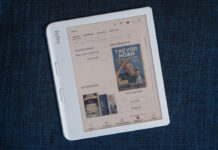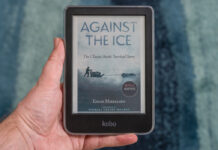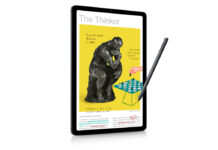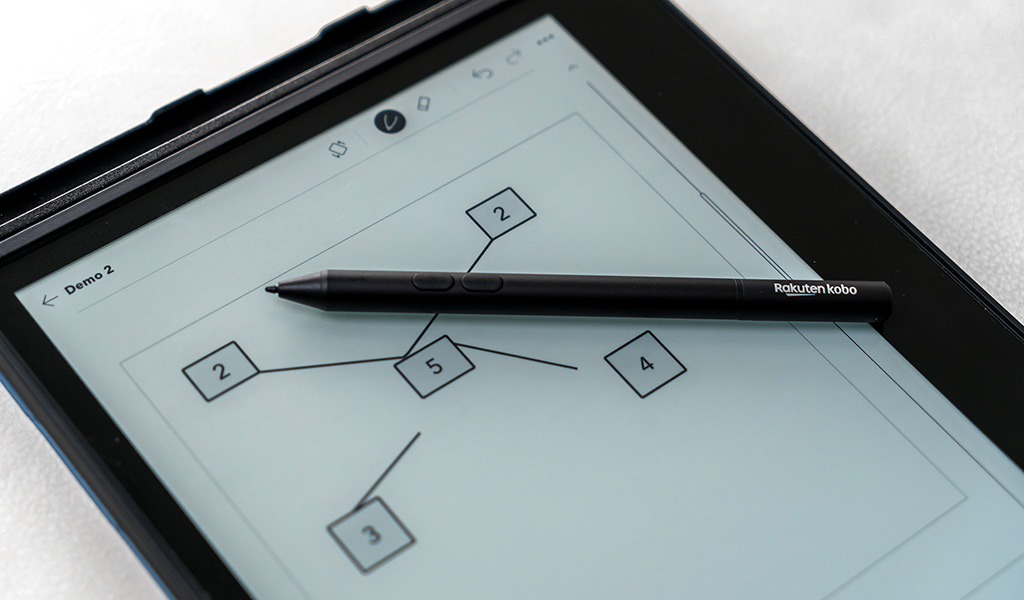
The Elipsa takes Kobo’s concept of an eReader and makes it far more active than simply turning pages, signalling a major alternative to the company’s other options.
It’s the size of the display—and adding a pen—that make all the difference. For the first time in Kobo’s lineup, you can take notes, highlight passages and otherwise use it as a stylus to navigate the interface. Those things aren’t possible in the same way with the likes of the Kobo Libra H2O or the more budget-friendly Nia. Is the Elipsa a tablet or a true eReader? Comparing it to others branding the same logo is one way to find out.
What the Kobo Elipsa can do
Any eReader sporting a 10.3-inch E Ink Carta display is going to stand out, though it’s not just the size that matters. At 389 grams, it’s considerably heavier than the other two models are, not to mention less wieldy. Kobo wisely includes a Sleepcover case in the box with the device, which does wonders for propping it up with the magnetic flaps when your hands get tired.
The case, while very convenient, does also make the Elipsa considerably thicker as well. Taking it with you isn’t going to feel much different than carrying a tablet wherever you go. It’s certainly not small enough to fit into a handbag, like the Nia or Libra H2O might, and that’s not so much a knock against it, just that its portability is going to be very relative.
What truly makes the Elipsa unique—aside from the size and weight—is the included stylus. It’s a pen that can write notes anywhere on the screen, with two buttons to either erase a note or highlight text. E Ink displays aren’t as responsive as your standard LCD or OLED on a phone or tablet, so Kobo had to go with better components under the hood to facilitate that. There are some important caveats to how the pen works, particularly with what you can and can’t do.
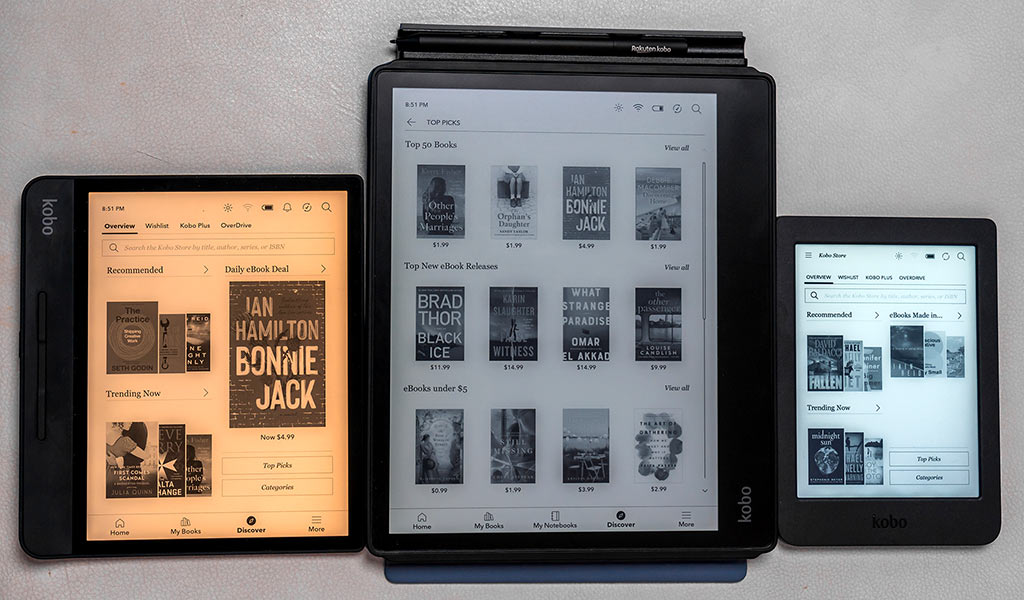
Where the differences come in
For starters, the Elipsa isn’t waterproof, so you won’t be jotting down notes or catching up on a book in the tub. In fact, water is dangerous to the device, and especially the pen. Kobo also didn’t include its ComfortLight Pro technology in the screen, meaning there’s no yellow tint to go easier on your eyes when reading in dim light or a dark room. If you’ve used certain Kobo devices before, these are two things you will definitely miss.
The Libra H2O was made for exactly those purposes. It works perfectly fine in clearwater, so you’re good to read in the tub or pool. It’s also the only one of the three to include ComfortLight Pro for easier reading in the dark. Its well-designed lip on the side for easy one-handed operation includes buttons for turning pages either way. The Nia lacks that kind of durability, but is decidedly smaller than the others, and that’s why it’s the easiest to travel with.
When you look at Kobo’s own platform, the basics are the same, save for the screen size. The Elipsa’s larger display means you can enlarge text more than you could with the others. The Libra H2O’s 7-inch display is capable of pushing pixels further that way, whereas the Nia’s real estate is limited with its 5-inch display. What sets the Elipsa further apart is the pen isn’t compatible with any other Kobo. Nothing happens when you write on the Libra H2O or Nia.
It also matters that the Elipsa also comes with a cover case, with magnets on the front flap handy for propping it up on a flat surface. Not just for reading, but also for writing on it at a comfortable angle. Both the Libra H2O and Nia require you to purchase a cover separately.
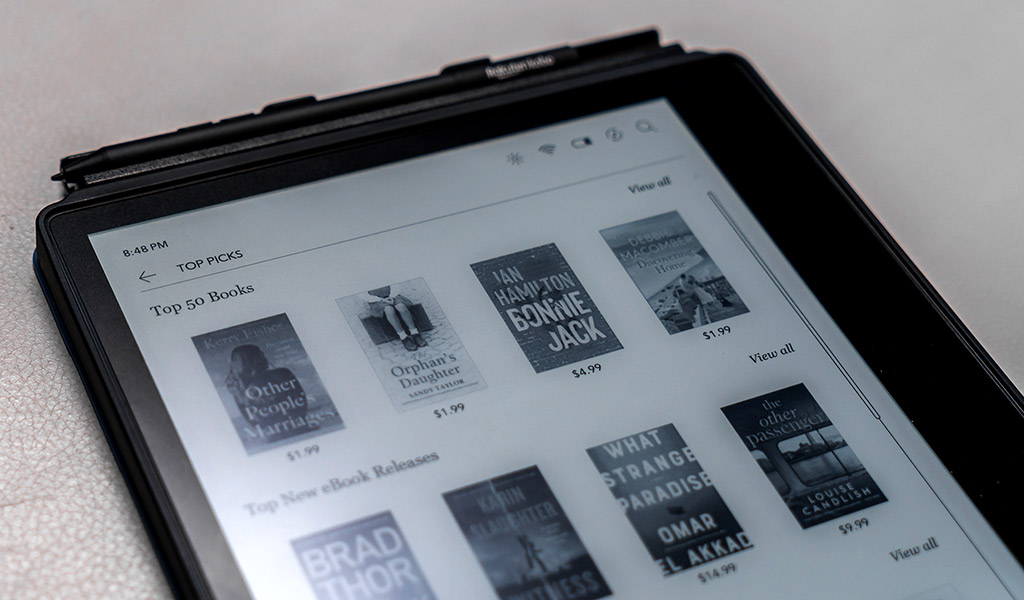
Content availability
Kobo’s store still has about six million eBooks available, all accessible when you connect via Wi-Fi. You also have solid integration with OverDrive for borrowing titles from public libraries, as well as Pocket for reading articles you save through it on the web. There’s even Dropbox access to bring in documents.
That’s important when all three devices support several key file formats. Any eBook or document in PDF, EPUB, EPUB3, PDF, MOBI, TXT, HTML or RTF will work once you load it by connecting to a PC or Mac. That also goes for image formats in JPEG, TIFF, GIF, PNG and BMP formats, including comic books in CBZ and CBR.
For the Elipsa, that access has bigger consequences. While you can write on anything you read on the device, handwritten notes won’t stick on what’s considered DRM (digital rights management) content. That basically amounts to almost every title in the Kobo store—but not documents you upload to the eReader. Any PDFs or other supported files you transfer will let you write on them and keep it there unless you erase it.
With DRM content, you can write on pages, except handwritten notes disappear once you turn the page. Any text you highlight with the pen stays though.
Pocket is still the best way to integrate the web into the device. In lieu of a browser, saving links to a Pocket account makes them available on the Libra H2O. It’s a great way to read up on a series of articles in places where you don’t have Internet access or prefer not to read on your phone.
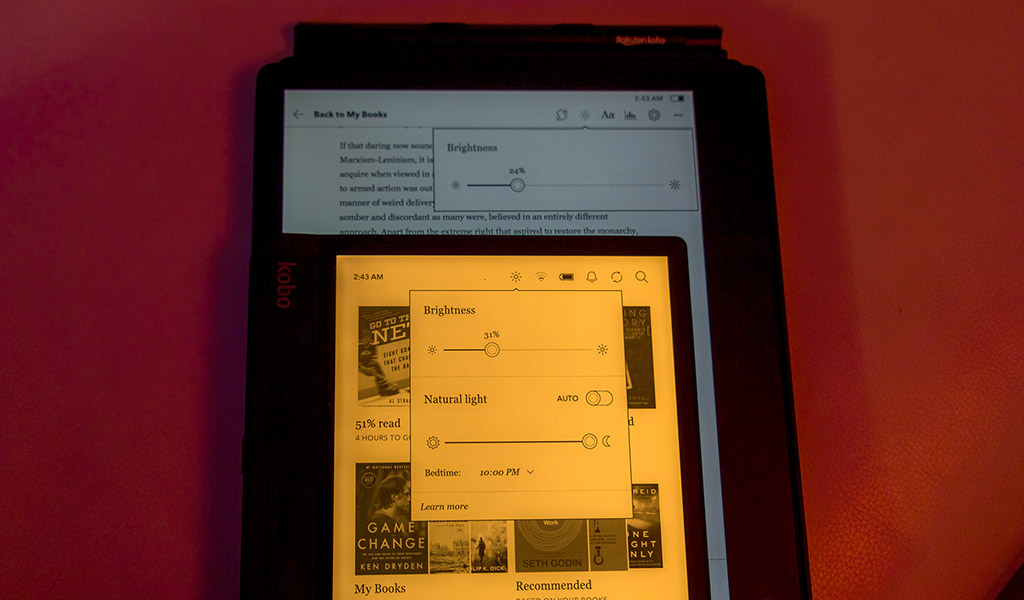
Reading on the Elipsa
The Elipsa lets you read in landscape mode—like the Libra H2O—only Kobo didn’t take full advantage of its size. Given the 10.3-inch screen, it’s unclear why there’s no option to lay out books with two pages facing each other.
The 32GB internal storage capacity is enough to store a ton of eBooks and documents. The Libra H2O and Nia max out at 8GB, which may seem like a little, but is ideal for devices of their size. One thing about the Elipsa is that its weight has a lot to do with the case. Take it off and it feels much lighter in your hands.
Kobo’s software also transcends its devices, so the two smaller models get the same updates. The only difference is in the specific notebook features the Elipsa offers.
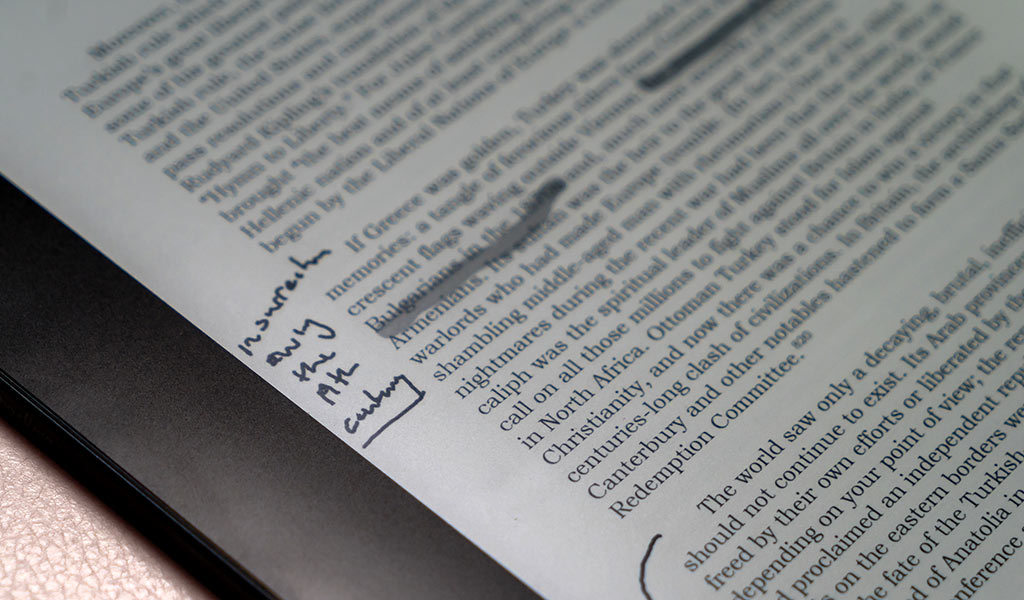
Taking notes with the Elipsa
Look at the bottom of the screen and you’ll see My Notebooks. This section is more free-flowing. You can either choose a “basic” notebook, which is just standard writing and doodling, or “advanced” to convert handwritten notes to text, and work on diagrams and equations. Those also convert to line drawings, so if you draw a circle with a word in it, it will appear that way.
It’s not going to feel like using a pen on an iPad or tablet, where the LCD or OLED screens are a little more responsive. There’s a slight lag with the Elipsa—long enough to notice, but perhaps not to get in the way. You can choose from five different pen tips to select onscreen, with different thicknesses, adding some customization.
When you mark up PDFs and other documents, you can upload them as they are to Dropbox with notes intact. For teachers, or anyone else who likes that concept, it’s easy to get behind. I just wish it was possible to save notes to DRM eBooks. The only alternative was to create notebooks and jot down notes for that book that way, but I never found it overly convenient.
Regular annotations still work the same way as they do on the Libra H2O and Nia. Hold down on a name, place, title, passage, etc. and you can add a note or look it up. You just can’t do all that with the pen, meaning you can’t write into the note box; you have to type into it.
Final thoughts
The Elipsa is a tough device to call. It’s a larger eReader that comes with a case and pen to induce you to take notes. Easy enough to do that, but I would caution about looking at this as a note-taking device. It’s more an eReader that offers it as an extra. If you love to read, want a bigger screen, and love the idea of taking notes, then the Elipsa may be what you’re looking for. If it’s just about reading books, the Libra H2O and Nia keep it as simple as that.
The Kobo Elipsa is available now, and only comes in black with a blue SleepCover case.



































